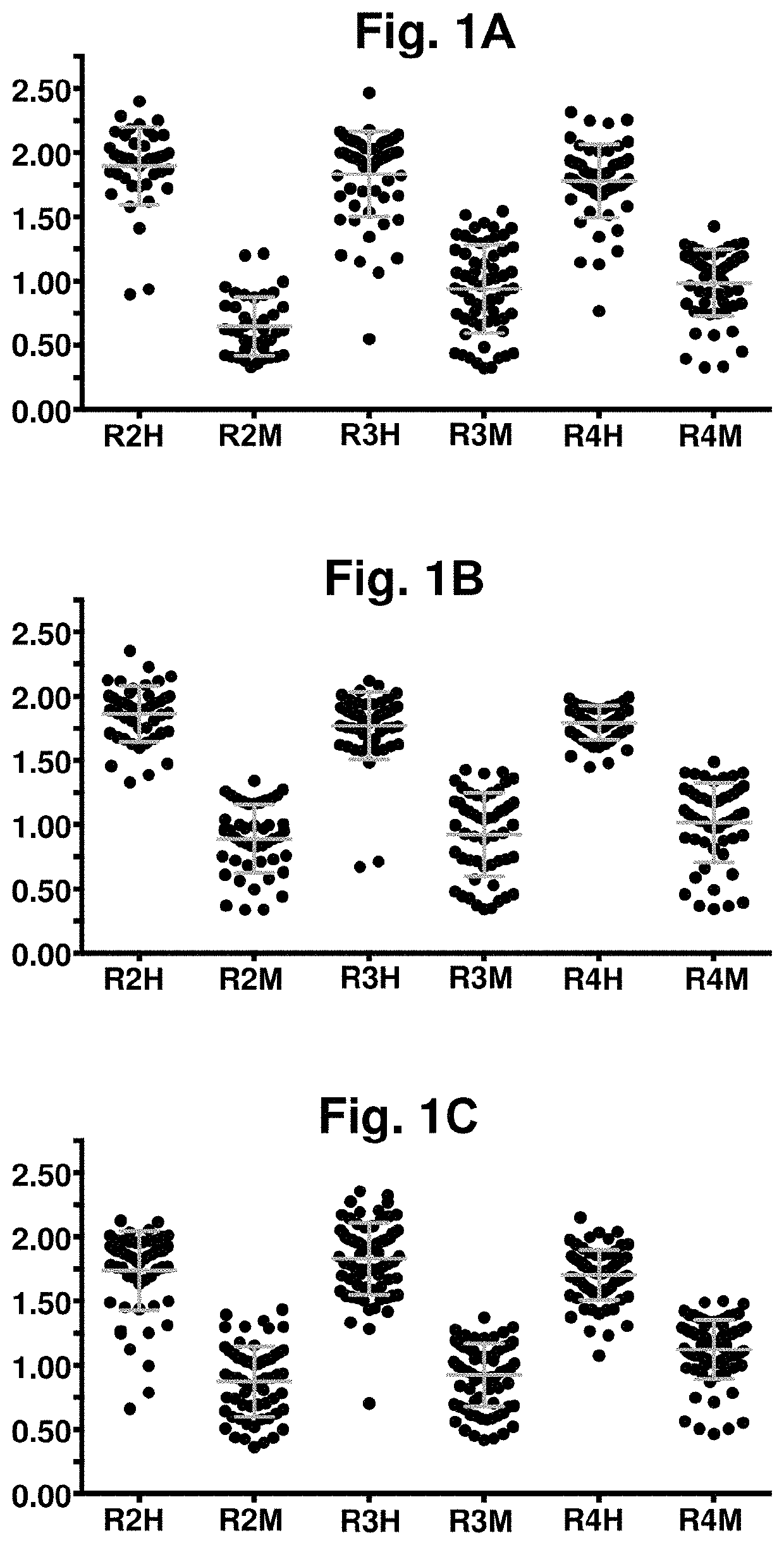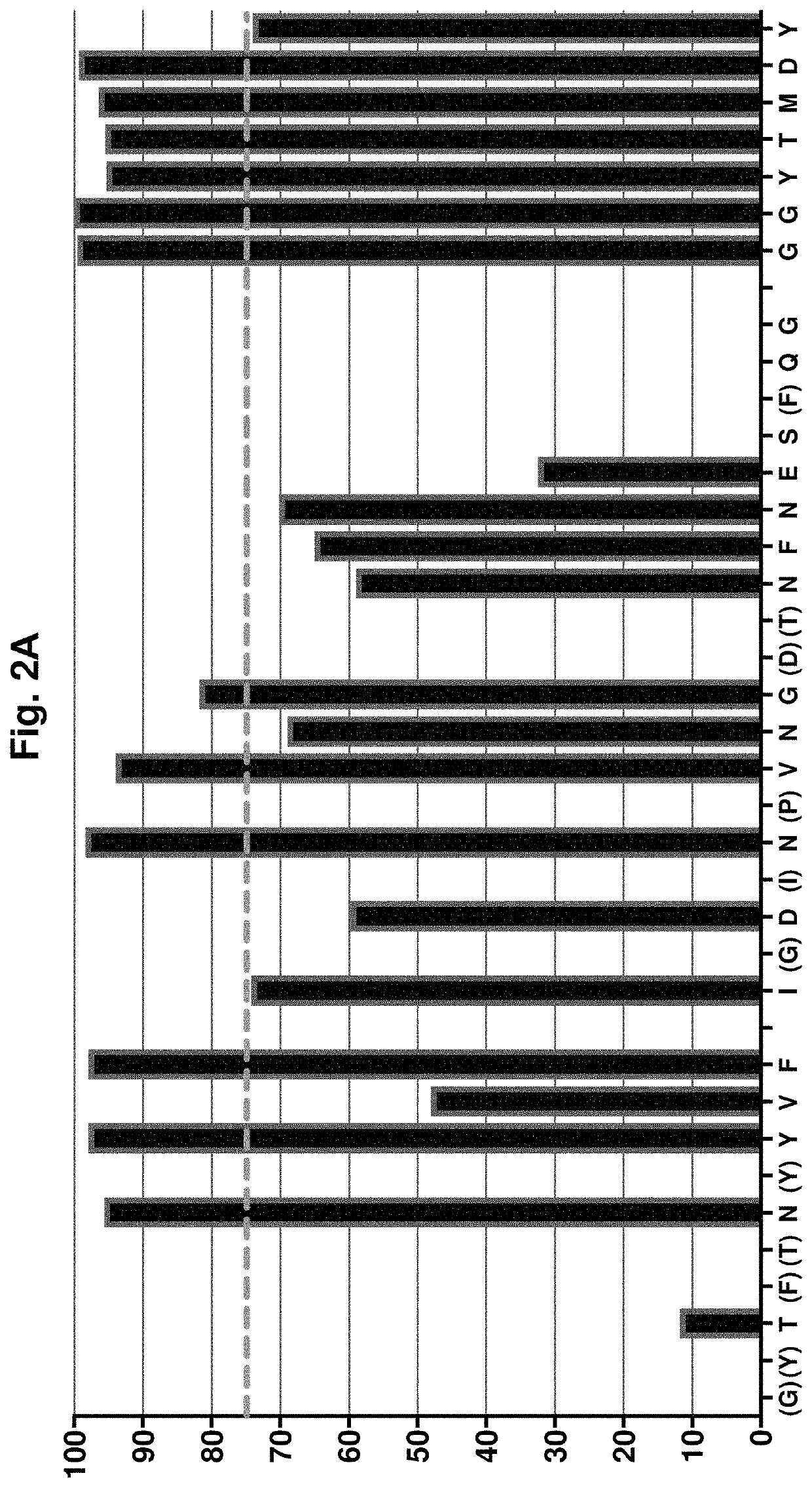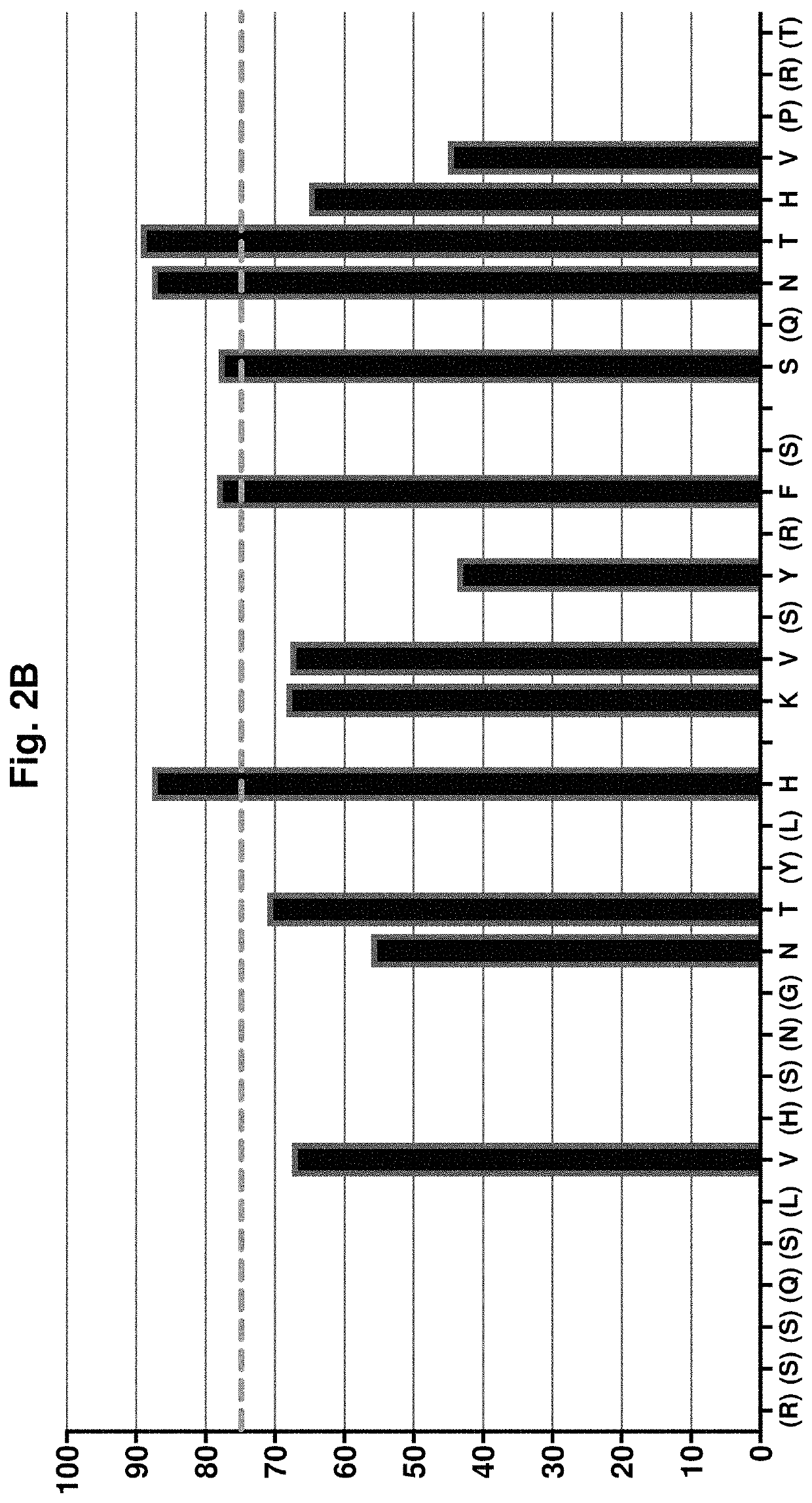Binding agents
a technology of binding agent and antibody, which is applied in the field of binding agent, can solve the problems of humanizing antibodies using this basic grafting method and still carrying significant clinical development risks, antibodies such as cd47 inhibitors, and reduce the target binding affinity of the resulting antibody, so as to improve the manufacturing properties of the antibody molecule, enhance and minimise human t cell epitope content
- Summary
- Abstract
- Description
- Claims
- Application Information
AI Technical Summary
Benefits of technology
Problems solved by technology
Method used
Image
Examples
example 1
Generation and Characterisation of Optimized Anti-CD47 Therapeutic Antibodies
[0266]Introduction
[0267]In this example, we successfully generate a panel of antagonistic, optimized anti-CD47 antibodies. These anti-CD47 antibodies are well expressed, biophysically stable, highly soluble and of maximized identity to preferred human germlines.
[0268]Materials and Methods
[0269]IgG Cloning, Transient Expression, Purification
[0270]Antibody v-domain encoding DNA sequences were cloned via restriction-ligation cloning into separate IgG heavy and light-chain expression cassettes in separate plasmid vectors. Antibodies were expressed in two forms of engineered human IgG: IgG4 with the S228P mutation to stabilise the IgG4 hinge, and IgG1null-IgG1 with the lower hinge mutations L234A / L235A / G237A, which minimise Fcy receptor-driven effector functions. IgGs were expressed in HEK-293expi cells after transient transfection with endotoxin-free IgG expression plasmid preparations, per manufacturer's proto...
PUM
| Property | Measurement | Unit |
|---|---|---|
| concentration | aaaaa | aaaaa |
| concentration | aaaaa | aaaaa |
| concentrations | aaaaa | aaaaa |
Abstract
Description
Claims
Application Information
 Login to View More
Login to View More - R&D
- Intellectual Property
- Life Sciences
- Materials
- Tech Scout
- Unparalleled Data Quality
- Higher Quality Content
- 60% Fewer Hallucinations
Browse by: Latest US Patents, China's latest patents, Technical Efficacy Thesaurus, Application Domain, Technology Topic, Popular Technical Reports.
© 2025 PatSnap. All rights reserved.Legal|Privacy policy|Modern Slavery Act Transparency Statement|Sitemap|About US| Contact US: help@patsnap.com



